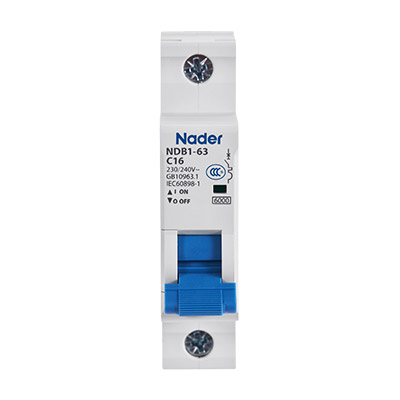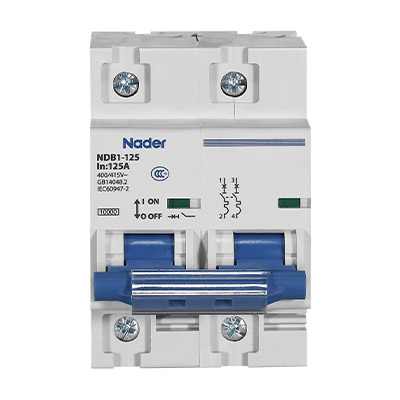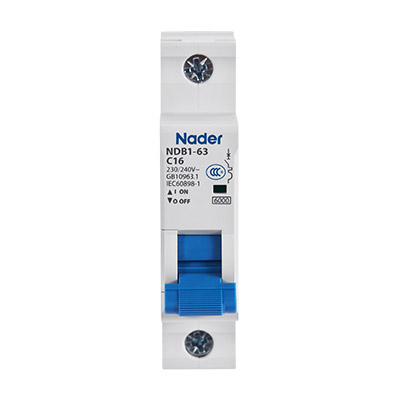The difference between 1P, 2P, 1P+N circuit breakers
Generally speaking, for the light circuit and the five-hole socket circuit, because of the low current, from an economic point of view, 1P circuit breakers are commonly used. If it is for more safety, you can use 1P+N circuit breakers, but personally think it is not necessary, 1P+N circuit breakers are often used in industry. The socket circuit must have a leakage protection device.
Socket circuits with larger currents, such as air conditioning socket circuits. A 2P circuit breaker must be used and a leakage protection device must be provided.
1P and 2P are also called 1 pole 2 poles. The number one or two indicates the number of modules of the circuit breaker. The width of a module is 12.5mm.
The 1P+N circuit breaker has the same width as the 1P circuit breaker, but there are some differences in function.
1P circuit breaker
From the appearance of the 1P circuit breaker, there are two wiring posts, which are distributed above and below the module.
1P circuit breakers are the cheapest, but they are also the least functional. When the circuit breaker is disconnected, only the live wire can be disconnected, and the neutral wire is still connected. Therefore, if there is a fault in the circuit at this time, causing the neutral line to become live, there is still a danger of electric shock.

2P circuit breaker
The 2P circuit breaker has two modules and four wiring posts, which are distributed above and below the two modules.
2P circuit breakers are usually used in places with high current or exposed circuits, such as socket circuits. The 2P circuit breaker can not only switch on and off the zero line at the same time, but also monitor the temperature of the zero line at the same time to achieve the purpose of overload and short circuit protection.

1P+N circuit breaker
The 1P+N circuit breaker combines 1P circuit breaker and 2P circuit breaker, and can even barely be regarded as a simplified version of 2P circuit breaker.
The 1P+N circuit breaker can turn on and off the neutral wire and the live wire at the same time, but the neutral wire cannot perform temperature detection. In other words, neither 1P circuit breaker nor 1P+N circuit breaker can trip when the neutral line is overloaded or short-circuited.





